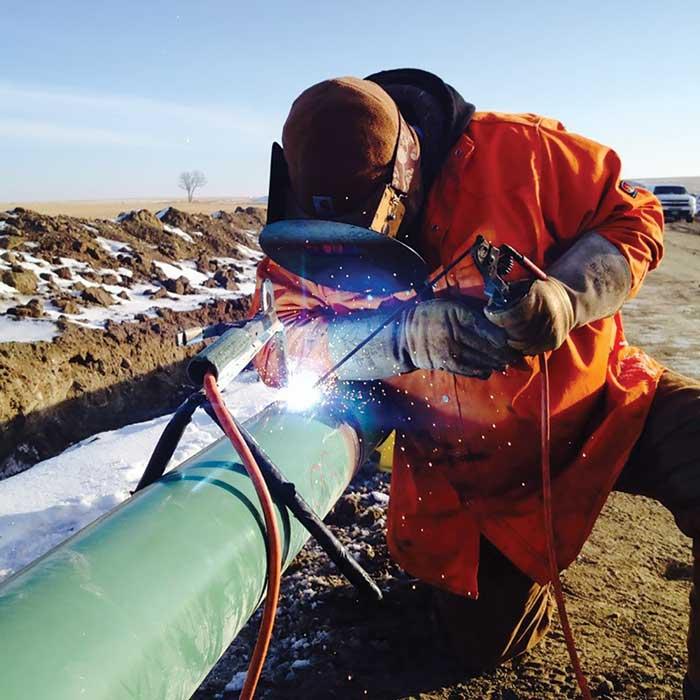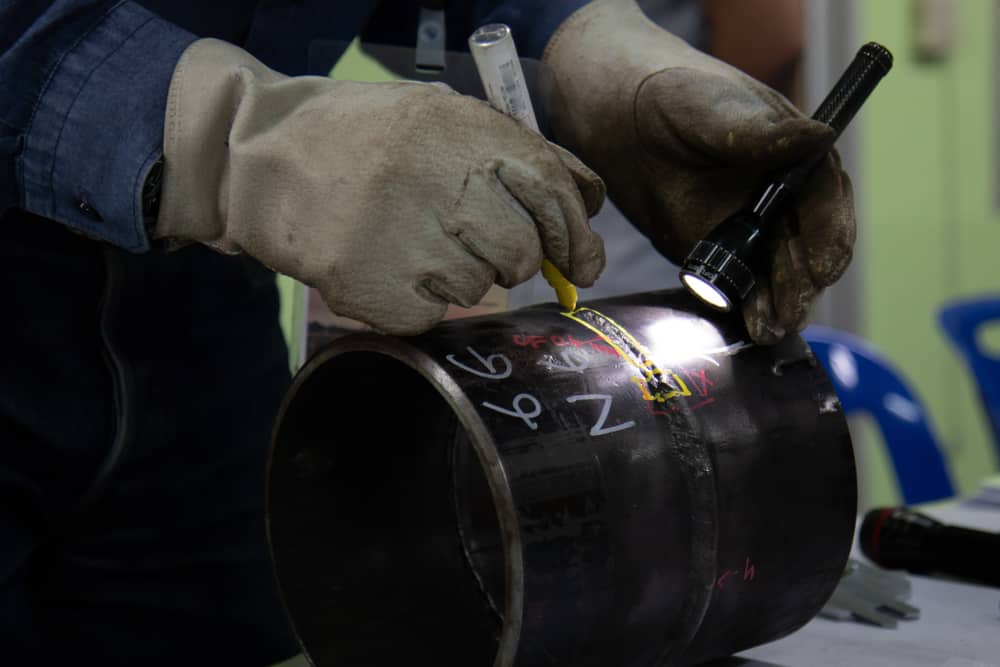Advanced Strategies in Pipe Welding Examination: Developments and Technologies for Boosted Accuracy and Dependability in Weld Assessment
The landscape of pipeline welding inspection is undertaking a significant improvement, driven by advanced techniques that assure to boost both precision and reliability in weld assessments. Technologies such as computerized examination systems and progressed imaging technologies are redefining standard methods, while non-destructive screening techniques make certain product integrity is maintained. As these technologies evolve, they not only raise issue detection prices however additionally make it possible for a lot more effective upkeep strategies. Nevertheless, the implications of these innovations expand past instant advantages, elevating important questions regarding future practices and standards in the market.

Relevance of Weld Examination
Ensuring the honesty of pipe welds is crucial to the total security and dependability of commercial systems. Welds function as the structural foundation of pipes, which move a variety of liquids under differing pressures. Defects in welding can result in catastrophic failings, causing not just significant financial losses but also potential environmental disasters and threats to public security. Therefore, rigorous evaluation of welds is important to the lifecycle of pipeline framework.
The relevance of weld evaluation extends past simple conformity with regulatory requirements. It acts as an aggressive step to recognize and rectify blemishes, such as insufficient blend, porosity, or fractures, prior to they intensify into severe issues. Effective inspection techniques additionally add to the durability of pipes, minimizing upkeep costs and improving operational effectiveness.
Moreover, comprehensive weld examinations foster trust amongst stakeholders, consisting of governing bodies, financiers, and the areas offered by these pipes. By guaranteeing that all welds satisfy the required requirements, organizations can mitigate dangers and support their credibilities. In summary, weld assessment is vital not only for functional integrity however also for the more comprehensive implications it holds for security and environmental stewardship.
Automated Assessment Solutions
The assimilation of computerized inspection systems in pipeline welding has actually changed the technique to ensuring weld high quality and stability. These systems employ sophisticated robotics and expert system to conduct assessments that are not just much faster but likewise a lot more consistent than typical methods. Automated systems can cover substantial sizes of pipelines efficiently, recording information that human examiners might overlook as a result of exhaustion or ecological conditions.
One of the vital benefits of automated assessment systems is their capability to operate in unsafe settings, reducing the threat to human assessors. They utilize numerous non-destructive testing (NDT) techniques, such as ultrasonic testing and magnetic bit inspection, to examine weld stability without compromising the framework. The data gathered is processed in real-time, enabling prompt feedback and timely corrective actions when defects are determined.
Furthermore, automated systems help with the standardization of evaluation processes, making certain that each weld is examined versus regular criteria. This not only boosts the integrity of outcomes yet additionally streamlines conformity with regulative standards. As markets remain to prioritize safety and operational performance, the duty of computerized evaluation systems in pipeline welding will definitely broaden, paving the way for more innovative quality guarantee techniques.
Advanced Imaging Technologies
Frequently employed in modern-day pipe welding evaluations, advanced imaging modern technologies have actually substantially boosted the capacity to detect and assess weld problems. Techniques such as electronic radiography, computed tomography, and thermographic imaging offer assessors with high-resolution pictures that reveal sub-surface flaws and structural disparities that might be unnoticeable to the nude eye.
Digital radiography makes use of electronic sensors to capture photos, permitting see this website prompt testimonial and enhanced picture comparison. This brings about much faster examinations and improved accuracy in determining vital flaws. Calculated tomography, on the various other hand, supplies three-dimensional imaging, making it possible for examiners to imagine complex geometries and analyze the integrity of welds from multiple angles - Pipeline Welding Inspection. This depth of analysis is invaluable for identifying issues that conventional methods might neglect.
Thermographic imaging utilizes infrared modern technology to discover variations in temperature, identifying areas of possible weakness or tension within the weld. These sophisticated imaging technologies not just improve defect detection prices but additionally minimize the time and sources needed for pipe assessments. As a result, they play a vital role in preserving pipe safety and integrity, making certain conformity with sector criteria while reducing functional threats.
Non-Destructive Testing Techniques
Making use of different methods, non-destructive testing (NDT) methods are necessary in pipeline welding evaluations, allowing for the analysis of weld integrity without jeopardizing the material's architectural stability. NDT includes a range of approaches, consisting of ultrasonic testing (UT), radiographic screening (RT), magnetic fragment screening (MT), and color penetrant screening (PT) Each approach has unique benefits and applications depending upon the details demands of the inspection.
Ultrasonic screening utilizes high-frequency sound waves to detect internal flaws, giving accurate measurements of weld density and honesty. Pipeline Welding Inspection. Radiographic testing uses X-rays or gamma rays to generate pictures of the weld, revealing interior issues that may not show up externally. Magnetic fragment screening works for detecting surface and near-surface gaps in ferromagnetic materials, while dye penetrant testing highlights surface fractures by utilizing a colored color
Including these NDT techniques right into pipeline welding examinations enhances the accuracy and integrity of weld analyses, making sure that possible failings are recognized early. As markets require greater standards for security and efficiency, the function of NDT in maintaining the stability of welded structures remains to be crucial in pipeline building and construction and upkeep.

Future Fads in Weld Analysis
As we aim to the future of weld evaluation, improvements in technology are positioned to transform the approaches used for reviewing pipe stability. The combination of artificial intelligence (AI) and device knowing in assessment procedures is expected to enhance the precision of flaw discovery have a peek at these guys and predictive upkeep. These modern technologies enable real-time data analysis, making it possible for assessors to identify prospective concerns prior to they intensify right into considerable issues.
In addition, making use of drones outfitted with sophisticated imaging systems is obtaining traction. These aerial examinations can cover vast locations quickly, catching high-resolution images and information that can be evaluated for problems in hard-to-reach areas. This not only enhances safety but likewise boosts efficiency in the evaluation procedure.
In addition, the advancement of smart sensing units embedded in pipeline systems provides the possibility for continuous tracking. These sensing units can detect modifications in pressure, temperature, and vibrations, giving valuable understandings right into the health and wellness of More Help the welds with time.

Conclusion
Finally, the integration of sophisticated strategies in pipeline welding examination considerably improves the accuracy and reliability of weld analyses. Technologies such as computerized assessment systems, progressed imaging innovations, and non-destructive screening methods play a crucial function in boosting problem detection prices and fostering proactive maintenance approaches. As these innovations proceed to evolve, they will certainly further make certain the safety and performance of pipeline systems, ultimately adding to the honesty of essential infrastructure.
